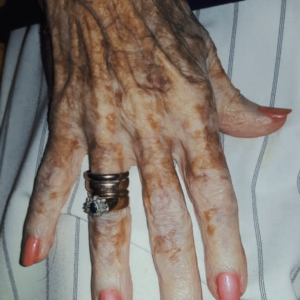One of the most deadly viral diseases in history, smallpox, was characterized by a strong fever and a noticeable skin rash. Smallpox epidemics were devastating by the early 20th century, when three out of ten affected people died from the illness. Survivors usually had scars engraved into their faces, serving as constant reminders of their battle.
This fatal and highly contagious disease was caused by the variola virus. In response, researchers created a novel vaccine using vaccinia, a live virus that is very comparable to variola but cannot cause smallpox. The vaccine spurred the immune system to produce antibodies capable of fighting off smallpox.
Thanks to this medical breakthrough, smallpox was declared eradicated in the early 1950s, a feat so monumental that routine vaccinations in the United States ceased in 1972. Today, only those working in high-risk environments, such as labs handling the virus, receive the vaccine.
A smallpox vaccine scar is a unique mark left at the site of vaccination. Typically, it appears as a small, round or slightly oblong indentation, often smaller than a pencil eraser. For some, the scar may be larger and raised due to a stronger immune response during the healing process.
Unlike modern injections that use thin needles to deliver fluid, the smallpox vaccine required a more invasive technique. Healthcare providers used a bifurcated needle — a tool with two prongs — which they dipped into the vaccine solution before repeatedly jabbing the needle into the skin. This method caused a noticeable injury, prompting the body to create scar tissue as it healed.
The live virus in the vaccine triggered a powerful immune reaction. As the body worked to fend off the virus, the injection site would scab over, often becoming itchy and sore. Eventually, the scab would fall off, leaving behind a pockmark-like scar as evidence of the body’s defense mechanisms.
While the upper left arm was the standard injection site, some recipients received the vaccine in less typical areas, such as the buttocks.
Despite the fact that the vaccination saved many lives, some people who received it developed moderate flu-like symptoms, such as fever, discomfort, and enlarged lymph nodes. Severe side effects, like allergic responses, dermatitis patients’ skin infections, or inflammation of the brain, were few.
Vaccine scars are mainly a thing of the past because smallpox inoculation is no longer common. Applying softening ointments, getting professional treatments like dermabrasion, or using sunscreen to avoid discolouration are all choices for people who wish to lessen the appearance of their scar.
Humanity’s victory over one of the most deadly illnesses in history is still demonstrated by the smallpox vaccine and the scars it left behind. Although smallpox is no longer a global threat, its story serves as a reminder of the power of vaccines in protecting public health.





